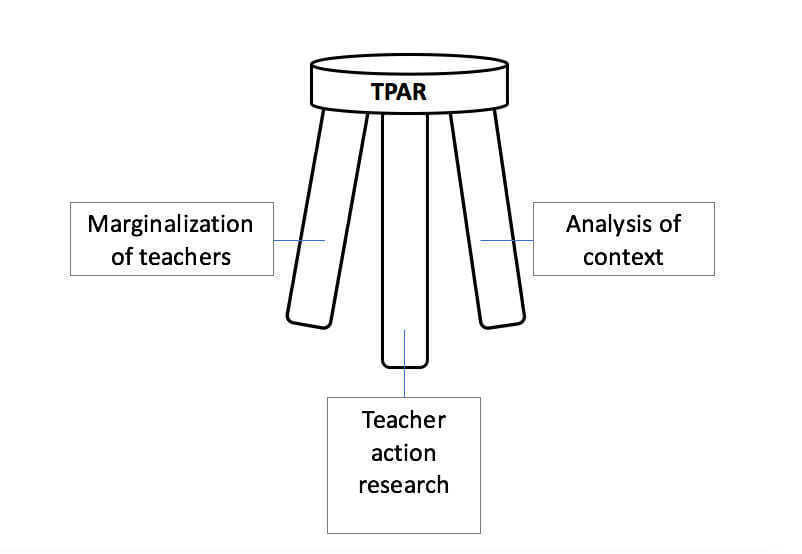Teacher Participatory Action Research (TPAR): Politicizing Teacher Research
These are difficult times for teachers, particularly those in urban and/or low-income schools. Unfortunately, we seldom hear directly from them in conventional education research. To help them tell their stories, I partnered with a group of veteran, insightful, and knowledgeable teachers for two years of action research. These dedicated teachers (with a combined 110 years working in one low-income, urban school district) explored food as it impacted their students. The teachers’ projects, which looked at student food insecurity, food and culture in a highly culturally-diverse school, and STEM learning through school gardens, revealed rich insights distilled from their teaching experience. As our project progressed, I realized that there wasn’t a methodology for the type of work we were doing. It took writing a dissertation to help me sort through my ideas about method and this paper is the result.
Recognizing “marginalization by association”
By definition, PAR projects engage populations who have been marginalized. YPAR, or Youth Participatory Action Research, has been increasingly utilized in education research, particularly with youth of color in low-income, urban places. Though we recognize the challenges teachers face in supporting these youth in neoliberal, measurement-obsessed times, we don’t typically examine how working with marginalized youth stigmatizes teachers. In this paper, I share my thoughts on “marginalization by association” and use it to make an argument that PAR can and should be used with teachers—and others—who work with marginalized populations in care-giving roles and themselves face marginalization as a result. I call this PAR work Teacher Participatory Action Research, or TPAR.
The TPAR model
I conceptualize TPAR as a three-legged stool, where projects have three parts: context/place analysis, description of the ways in which teachers are being marginalized within that context, and action research by teachers. The action research projects are conceived and executed by teachers, while the other two parts can be performed by researcher-collaborators and/or the teachers, depending on the project needs. Finally, as a PAR project, TPAR strives to improve the lives of teacher participants through the process of action research.
To quote the guest editor, Kent Glazer: “The strengths of this manuscript are three. First, the concept of “marginalization by association,” is redolent with import, a part of the everyday experience of many US teachers that remained before your work, if not subliminal in our national consciousness, at least under-scrutinized. Second, you have positioned TPAR within a simply top-notch summary of the relevant literature and I suspect that this summary will serve future researchers well. Third, you’ve offered future researchers and practitioners a simple conceptual framework for conducting TPAR work.”
Read the article, go out and do TPAR, and let me know how it goes!
Blog post by Sarah Stapleton
We invite you to learn more about this experience by reading our article HERE. Free 30-day access is available for this article beginning 16 April 2018.
After you’ve had a chance to read this piece, please share your thoughts, ideas, or experiences with our community in the comments below so we can continue this discussion!
- Making Public Deliberations Inclusive with Mixed Methods AR - October 26, 2020
- Participatory action research with Aboriginal Elders: Ngulluk Koolunga Ngulluk Koort project - October 12, 2020
- Bringing the relational self to ART: Interview with Dr. Yvonne Skipper - October 1, 2020

